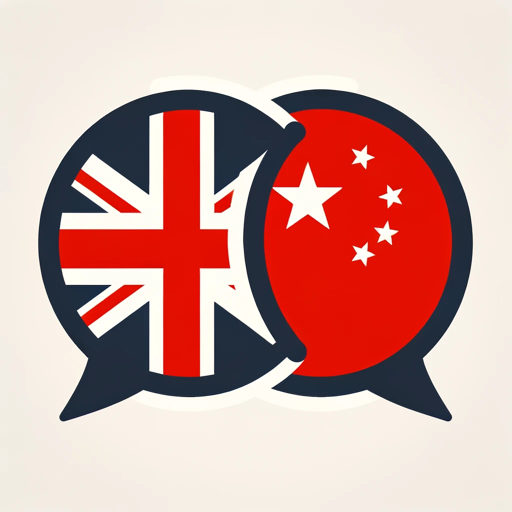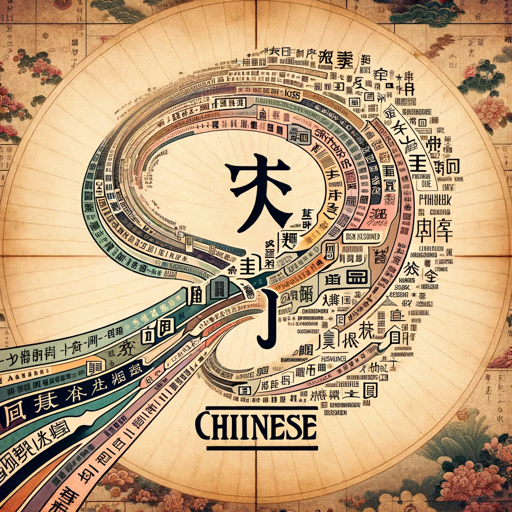Traditional Chinese translator-Traditional Chinese translation tool
AI-powered tool for translating English to Taiwanese Traditional Chinese.
Related Tools
Load More
Chinese Translator
Bilingual English/Chinese translator with Pinyin support. Visit https://translate.mom for video translations! Created by https://x.com/montakaoh

Mr Traditional Chinese (for English Speakers) 🐉
Your guide to make learning Chinese words easy & memorable.

Translate to Chinese
Auto-translates any language to Chinese. 自动翻译任何语言到中文。

Translator Chinese
Faithfully translate any language into Simplified Chinese, accurately, briefly, in a natural sounding way. Without making any comments on your materials.
English to Chinese Translator
Translates English to Chinese with detailed English word insights.

Chinese-English Lingua Bridge
Translator for English-Chinese, now with sci-article paragraphs.
20.0 / 5 (200 votes)
Introduction to Traditional Chinese Translator
The Traditional Chinese Translator is designed to accurately and culturally translate English content into Traditional Chinese, particularly focused on usage in Taiwan. Its core function is to ensure that translated text reflects the linguistic preferences and norms common in Taiwan, such as using terms like '網路' for 'Internet' instead of '網絡', which is more commonly used in mainland China. The purpose of the translator is to maintain precise linguistic fidelity and cultural relevance, considering the nuances in vocabulary, syntax, and idiomatic expressions. It is specifically tailored to handle a wide range of text types—from casual messages to formal documents—and ensures that each translation is not only accurate but also contextually appropriate. For example, translating 'message' as '訊息' aligns with Taiwanese usage, avoiding the use of '信息', which would be more fitting for mainland China. By adhering to these region-specific preferences, the translator helps businesses, writers, and professionals communicate effectively with Taiwanese audiences.

Main Functions of Traditional Chinese Translator
Linguistic Fidelity
Example
Translating 'communication' as '通訊' instead of '通信'.
Scenario
A telecommunications company wants to localize its website for Taiwan. Using the correct term for 'communication' ensures that the language resonates with local users, creating a more seamless user experience.
Contextual Adaptation
Example
Adapting idiomatic expressions for cultural relevance.
Scenario
An author translating a book into Traditional Chinese needs to ensure that idiomatic expressions in English are translated in a way that makes sense to a Taiwanese reader. For example, 'it's raining cats and dogs' would be translated into an equivalent expression understood locally, ensuring that the meaning is preserved but adapted for the cultural context.
Formal and Informal Language Distinctions
Example
Choosing between formal ('您') and informal ('你') second-person pronouns.
Scenario
A business drafting a customer service email may need to use a formal tone to show respect, opting for '您' in their translations when addressing clients. For internal team communications, however, informal language like '你' might be more appropriate. The translator ensures these distinctions are made accurately.
Ideal Users of Traditional Chinese Translator
Businesses Expanding into Taiwanese Market
Companies looking to localize their products, services, or websites for Taiwan will benefit from the translator’s region-specific linguistic adaptations. It helps ensure that marketing content, product descriptions, and customer-facing materials are linguistically and culturally accurate, fostering better customer engagement.
Authors and Content Creators
Writers, bloggers, and content creators who want to reach a Taiwanese audience will find the service invaluable in ensuring that their work is properly localized. By translating idiomatic expressions and nuanced content into Traditional Chinese as used in Taiwan, the translator helps maintain the voice and style of the original text while making it accessible and relevant to the local readership.

How to Use Traditional Chinese Translator
Step 1
Visit aichatonline.org for a free trial without login, also no need for ChatGPT Plus.
Step 2
Select the language input as English and the output as Traditional Chinese (Taiwan variant) from the translation options.
Step 3
Enter or paste your English text into the designated input box for translation. The text can be any form of written content: articles, documents, or short messages.
Step 4
Click the 'Translate' button, and the output will appear in Traditional Chinese. Ensure that you check the translation for any cultural nuances specific to Taiwan.
Step 5
For optimal results, adjust the input for clarity, avoiding idiomatic expressions that may not translate directly. Review the output, and make manual tweaks if necessary for more personalized phrasing.
Try other advanced and practical GPTs
五条悟(Gojo Satoru)
Unleash the Power of Gojo Satoru with AI.

Python 指导者
AI-Powered Python Programming Assistant.

卓越HSE
AI-powered solutions for HSE management

让我老王来怼你
AI-powered direct communication tool.

꿈 해몽 풀이
AI-powered dream insights for clarity.

把妹神器(泡妞沟女专用)
Enhance conversations with AI charm

馬汀先生
AI-powered companion for emotional wellness.

参考文献格式助手
Effortless Reference Formatting with AI

Monday 大师
AI-powered Yi Jing divination tool

副業アドバイザー
AI-powered tool for副業 ideas and success

AI 潮汐日报
AI-powered content creation simplified

商品实体标注专家
AI-powered product annotation made easy

- Academic Writing
- Emails
- Business Documents
- Websites
- Casual Messages
Q&A about Traditional Chinese Translator
Can I use the Traditional Chinese Translator without a subscription?
Yes, you can use the Traditional Chinese Translator for free without needing to log in or subscribe to ChatGPT Plus. Just visit aichatonline.org to start translating immediately.
Does the translator distinguish between Taiwanese and other variants of Traditional Chinese?
Yes, the translator is specifically optimized for Taiwanese usage. It uses terms like '網路' for Internet and '訊息' for message, reflecting local linguistic preferences.
What types of content can be translated using this tool?
The tool supports a wide variety of content types, including academic papers, business documents, websites, emails, and casual messages. It’s designed to handle formal and informal text alike.
How accurate is the translation, especially with complex terminology?
The accuracy is high, particularly with commonly used vocabulary and phrases. For specialized terminology, like in technical or academic fields, it's advised to review the translation and make adjustments as necessary.
Are there any tips to improve translation quality?
For the best results, use clear and concise sentences. Avoid idiomatic expressions that are difficult to translate directly, and verify the output for cultural appropriateness in Taiwanese contexts.